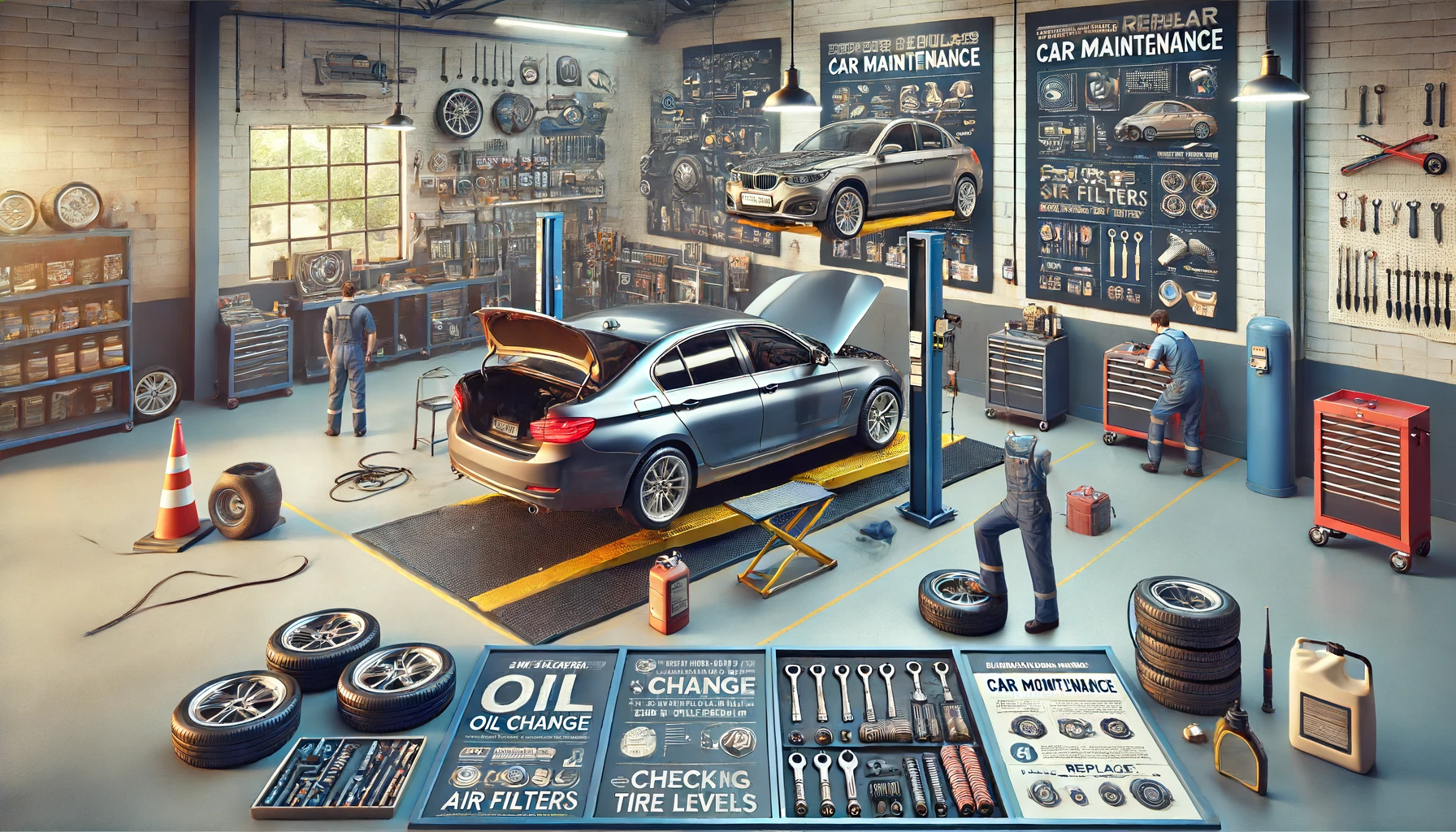Vehicle Upkeep for Durability and Enhanced Functionality Adhering to a meticulous vehicle care regimen is paramount for securing its durability and ensuring peak functionality. Diligent maintenance wards off exorbitant repairs, fortifies safety, and augments fuel economy. Presented here is an exhaustive manual to vehicle preservation, crafted to ensure your automobile operates seamlessly for the foreseeable future.
- Consistent Oil Renewal
Necessity of Oil Renewal Engine oil is pivotal for minimizing friction amidst engine components. As time elapses, oil deteriorates and amasses impurities, which can diminish engine efficacy and provoke harm.
Frequency Standard Oil: Replace each interval of 3,000 to 5,000 miles. Advanced Synthetic Oil: Replace each interval of 7,500 to 10,000 miles. Oil Change Protocol
- Ignite the engine briefly to heat the oil.
- Position a receptacle beneath the oil plug, remove it, and permit oil to flow out.
- Discard the old oil filter and install a fresh one.
- Reinsert the oil plug and introduce new oil as per vehicle specifications.
- Air Filter Examination and Replacement
Significance of Air Filters Air filters obstruct pollutants from invading the engine. A pristine filter is instrumental in optimizing engine output and fuel conservation.
Frequency Assess every 12,000 miles. Substitute every 15,000 to 30,000 miles, or based on manufacturer guidance. Air Filter Replacement Steps
- Identify the air filter housing, typically proximate to the engine.
- Extract the aged filter.
- Insert a new filter and ensure the housing is securely closed.
- Tire Pressure and Condition Surveillance
Value of Tire Upkeep Right tire pressure and health are critical for secure driving, fuel conservation, and extending tire lifespan.
Tire Pressure Monthly Review: Employ a pressure gauge. Inflation: Inflate to the suggested PSI by the manufacturer. Tire State Tread Examination: Verify adequate tread with a depth tool. Rotation: Rotate every 6,000 to 8,000 miles for uniform wear. Alignment and Balance: Annually check alignment and balance upon detecting vibrations.
- Brakes Inspection
Brake System Importance Brakes are fundamental for vehicular safety. Routine checks can avert malfunctions and prolong brake parts’ longevity.
Indicators of Brake Wear
- Squeals or grinding sounds.
- Tremors during deceleration.
- Increased stopping distance.
Frequency Evaluate Pads and Discs: Every 12,000 miles. Brake Fluid: Flush and replenish every two years or per manufacturer’s recommendations.
- Fluid Level Management
Vital Fluids
- Coolant: Prevents engine overheating.
- Brake Fluid: Facilitates braking.
- Transmission Fluid: Lubricates transmission parts.
- Power Steering Fluid: Eases steering.
- Windshield Washer Fluid: Cleans the windshield.
Frequency Coolant and Brake Fluid: Biannual checks. Transmission Fluid: Review every 30,000 to 60,000 miles. Power Steering and Washer Fluid: Monthly checks and replenish as necessary.
- Spark Plug and Wire Replacement
Spark Plug Function Spark plugs initiate combustion in the engine. Degraded spark plugs can cause poor engine performance and fuel inefficiency.
Frequency Change every 30,000 to 100,000 miles, contingent on spark plug type. Replacement Method
- Locate spark plugs at the engine’s summit.
- Use a socket to remove old plugs.
- Install and secure new plugs to the specified torque.
- Battery Upkeep
Battery Upkeep Imperative The battery energizes the car’s electrical framework. Consistent battery care guarantees dependable ignition and system operation.
Frequency Terminal Checks: Biannual cleaning and corrosion inspection. Voltage Tests: Annual, or if starting problems arise. Advice
- Scrub terminals to eliminate corrosion.
- Fasten the battery to mitigate vibrations.
- Cooling System Maintenance
Cooling System Role It guards against engine overheating. Proper care guarantees efficient operation.
Frequency Coolant Inspection: Monthly. System Flush: Every 30,000 miles or as advised. Cooling System Flushing Steps
- Drain the old coolant.
- Flush with water while the engine runs.
- Drain again and add the appropriate coolant mix.
- Belt and Hose Checks
Belts and Hoses Relevance They are integral to the alternator, water pump, and air conditioning functioning.
Frequency Examine every six months for wear or leaks. Recommendations
- Replace damaged belts.
- Ensure hoses are leak-free and firmly attached.
- Vehicle Sanitation
Cleanliness Benefits Regular washing averts rust, preserves appearance, and protects the coating.
Frequency Exterior Wash: Biweekly. Wax: Semiannually to shield paint. Interior Cleanse: Monthly vacuuming and surface wiping. Cleaning Tips
- Utilize designated automotive cleaning agents.
- Protect the interior with sunshades and covers.
Conclusion Assiduous attention to your automobile’s various facets is essential for maintaining its reliability, efficiency, and safety. By adhering to the outlined maintenance schedule, your vehicle’s lifespan will be extended, the driving experience will be enhanced, and its value will be preserved.
